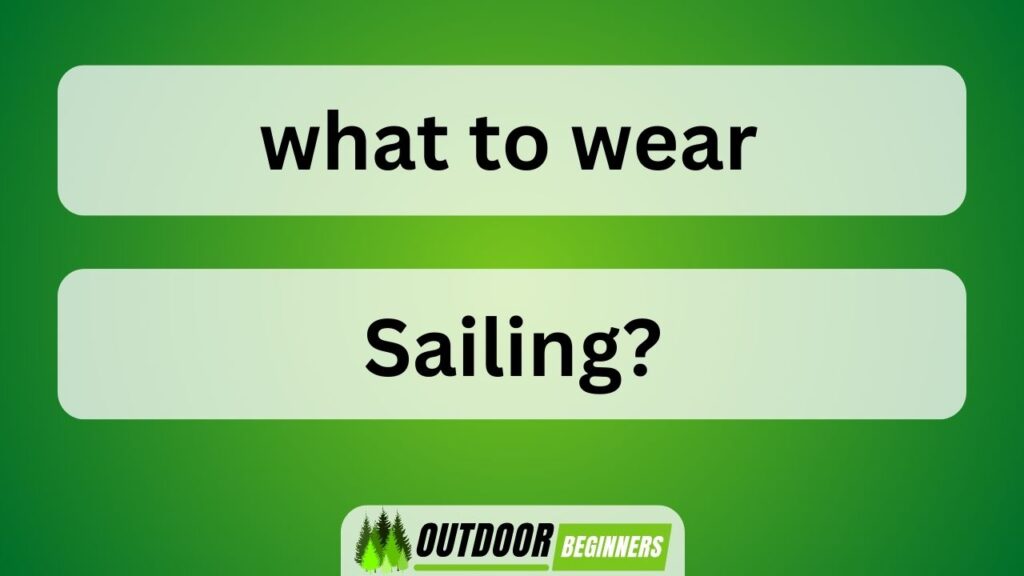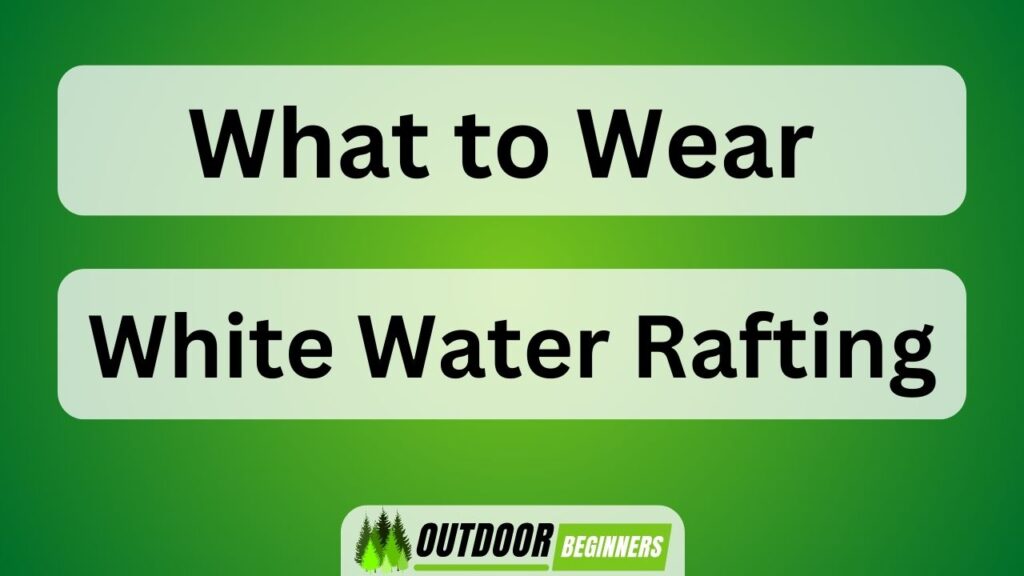Looking for the perfect outfit to set sail? Look no further! We’ve got you covered when it comes to what to wear sailing. Whether you’re a seasoned sailor or a beginner hitting the open waters, our expert advice will ensure you’re dressed for success.

From essential clothing and protective gear to must-have accessories and sun protection tips, we’ll help you navigate the world of sailing fashion with confidence.
So grab your sea legs and get ready for an adventure in style!
Key Takeaways of What to Wear Sailing
- It is important to wear waterproof and windproof clothing while sailing to protect against the elements.
- Non-slip shoes with rubber soles are essential to ensure stability and prevent accidents on deck.
- Layering is crucial for adjusting to changing weather conditions, with a moisture-wicking base layer and insulating mid-layer.
- Safety should be a top priority, with everyone on board wearing a life jacket and regular inspection of safety equipment.
Essential Clothing for Sailing
You’ll need to pack essential clothing for sailing, such as a waterproof jacket and non-slip shoes. When it comes to footwear options, it’s important to choose something that provides good grip on wet surfaces. Look for deck shoes or sailing boots with rubber soles to ensure stability while on board.

Layering techniques are crucial for staying comfortable in changing weather conditions out at sea. Start with a moisture-wicking base layer that will keep you dry and regulate body temperature. Add a mid-layer, like a fleece or lightweight sweater, for insulation. Finally, top it off with a waterproof and windproof outer layer to protect yourself from the elements.
Footwear for Sailing Adventures
For a sailing adventure, it’s important to choose appropriate footwear that provides traction and support on the boat. When it comes to sailing, waterproof footwear is essential. The constant exposure to water can quickly ruin regular shoes, so investing in waterproof options is crucial.

Not only will they keep your feet dry, but they will also prevent any unwanted slips or accidents on deck. Slip-resistant shoes are another must-have for sailors. The wet surfaces on a boat can be extremely slippery, making it easy to lose your footing. Slip-resistant shoes are designed with special outsoles that provide excellent grip and traction on wet surfaces, ensuring you stay steady on your feet even in challenging conditions.
Protective Gear for Rough Waters
When it comes to sailing, having the right gear is essential for both comfort and safety on the water. In this discussion, we will explore the key points of essential sailing gear and safety precautions that should be taken when venturing out into rough waters.
Essential Sailing Gear
Make sure to pack a waterproof jacket and sturdy deck shoes for your sailing trip. When it comes to choosing sailing footwear, there are three essential factors to consider:
- Grip: Look for shoes with non-slip soles that provide excellent traction on wet surfaces. This will ensure stability and prevent accidents while maneuvering on the boat.
- Breathability: Opt for shoes made from breathable materials like mesh or canvas. This will help keep your feet dry and comfortable, even in hot weather or when splashed with water.
- Quick-drying: Sailing involves being exposed to water, so it’s crucial to choose shoes that can quickly dry out. Avoid materials that retain moisture, as they can make your feet cold and uncomfortable.
Safety Precautions on Water
Choosing the right safety equipment is crucial for any water activity. When it comes to water safety, following proper guidelines for life jackets is of utmost importance.
Life jackets are designed to keep us afloat and protect us from drowning in case of an accident or emergency situation on the water. It is essential to choose a life jacket that fits properly and meets the required safety standards.

The guidelines for life jackets include ensuring that they are Coast Guard approved, properly sized based on weight and chest size, and equipped with adjustable straps and buckles for a secure fit. Additionally, it is recommended to regularly inspect your life jacket for any signs of wear or damage and replace it if necessary.
Layering for Changing Weather Conditions
Don’t forget to layer your clothing for the changing weather conditions while sailing. Proper layering is essential to ensure comfort and protection throughout your voyage. Here are three optimal layering techniques for dressing in changing conditions:
- Base Layer: Start with a moisture-wicking fabric close to the skin to regulate body temperature and keep you dry. Look for materials like merino wool or synthetic blends that offer excellent breathability.
- Insulating Layer: Add an insulating layer such as a fleece or down jacket to trap heat and provide warmth when temperatures drop. Opt for lightweight options that can be easily removed if needed.
- Outer Shell: Finally, top it off with a waterproof and windproof outer shell to shield yourself from rain, spray, and gusty winds. Choose a breathable jacket with sealed seams to keep you dry without sacrificing comfort.
Choosing the Right Sailing Pants
When it comes to choosing the right sailing pants, there are two key factors to consider: optimal fabric choices and the balance between waterproof and breathable.
The fabric choice is crucial as it determines the durability, comfort, and performance of your pants in various weather conditions.
Finding the right balance between waterproof and breathable materials ensures that you stay dry from external moisture while allowing perspiration to escape, keeping you comfortable throughout your sailing adventure.
Optimal Fabric Choices
For sailing, it’s best to go with fabrics that are lightweight and moisture-wicking. When choosing the right sailing pants, consider these optimal fabric choices:
- Nylon: This synthetic fabric is lightweight, quick-drying, and offers excellent durability for long hours on the water.
- Polyester: Another synthetic option, polyester is known for its moisture-wicking properties and resistance to wrinkles and shrinking.
- Spandex: Adding a touch of spandex to your sailing pants can provide flexibility and stretch for ease of movement during maneuvers on the boat.
These fabric choices not only keep you comfortable but also enhance your performance on the water.
Now, let’s dive into the next section where we discuss the important factors of waterproofness versus breathability in sailing gear.
Waterproof Vs. Breathable
Let’s explore the differences between waterproof and breathable materials in sailing gear.
When it comes to choosing the right fabric for your sailing adventures, understanding the advantages of waterproof technology and breathable fabrics is crucial.
Waterproof technology ensures that no water penetrates through the fabric, keeping you dry even in heavy rain or splashing waves.
On the other hand, breathable fabrics allow moisture vapor to escape from within, preventing sweat buildup and enhancing comfort during physical activities.
It’s important to note that these two properties can coexist in a single material, providing optimal protection against both water and perspiration.
Advanced technologies like Gore-Tex have revolutionized sailing gear by combining waterproofness with breathability, making them essential for any sailor looking for top-notch performance on the water.
Picking the Perfect Sailing Jacket
To stay warm and dry while sailing, you’ll want to choose the perfect sailing jacket. When it comes to optimal fabric choices, there are two main considerations: waterproof and breathable materials.
Here are three key factors to consider:
- Waterproofness: Look for a jacket made with a waterproof fabric that has a high water resistance rating. This will ensure that you stay dry even in heavy rain or when splashed by waves.
- Breathability: A breathable sailing jacket is essential to prevent moisture build-up inside the garment. Opt for fabrics with good breathability ratings that allow perspiration to escape while keeping water out.
- Layering capability: The ideal sailing jacket should have room for layering underneath, allowing you to adjust your insulation levels based on changing weather conditions.
Must-Have Accessories for Sailing Trips
When it comes to sailing, having the right gear is essential for a safe and enjoyable experience. We must ensure that we have all the necessary equipment on board, including life jackets, flares, and a first aid kit.
Additionally, protecting ourselves from the sun’s harmful rays is crucial, so we should always bring sunscreen, hats, and sunglasses to stay safe while out on the water.
Essential Gear for Sailing
Make sure you’ve got the essential gear for sailing, like a life jacket and deck shoes.
When it comes to what to wear while sailing, there are a few key items you don’t want to forget. Here’s our list of must-haves:
- Optimal Fabric Choices: Look for clothing made from quick-drying materials such as nylon or polyester. These fabrics will keep you comfortable by wicking away moisture and drying quickly after getting wet.
- Sun Protection Essentials: Protecting yourself from the sun is crucial when spending long hours on the water. Don’t forget to bring along a wide-brimmed hat, sunglasses with UV protection, and sunscreen with a high SPF rating.
- Layering Pieces: Weather conditions can change quickly at sea, so it’s important to have versatile layering options on hand. Pack lightweight jackets or fleece pullovers that can be easily added or removed as needed.
Safety Equipment on Board
Don’t forget to have safety equipment on board, such as a first aid kit and fire extinguisher. Safety equipment maintenance is crucial for any sailing adventure. Regularly inspecting and maintaining your gear ensures that they will be ready to use in case of an emergency.
One piece of safety equipment that should never be overlooked is the life jacket. Life jackets are essential for every person on board, regardless of their swimming ability. They provide buoyancy and can potentially save lives in rough waters or if someone falls overboard. It’s important to ensure that life jackets are properly fitted and in good condition before setting sail.
Sun Protection Essentials
Sunscreen is essential for protecting your skin from harmful UV rays while out on the water. Here are three key things to consider when choosing and applying sunscreen:
- SPF: Look for a sunscreen with a high SPF (Sun Protection Factor) to provide maximum protection. Opt for SPF 30 or higher, which blocks 97% of UVB rays.
- Broad-spectrum: Ensure that your sunscreen offers broad-spectrum protection, meaning it shields against both UVA and UVB rays. This will safeguard your skin from long-term damage caused by sun exposure.
- Water-resistant: Since you’ll be sailing, choose a water-resistant sunscreen that won’t easily wash off or sweat away. Reapply every two hours to maintain its effectiveness.
Remember, layering for sun protection is crucial too! Wear protective clothing like long-sleeved shirts, wide-brimmed hats, and sunglasses to shield yourself from direct sunlight.
Stay safe under the sun!
Sun Protection Tips for Sailing
When sailing, we should wear protective clothing to shield our skin from the sun’s harmful rays.
Sunscreen application is crucial before setting sail, as it helps create a barrier against UV radiation. Make sure to choose a broad-spectrum sunscreen with a high SPF rating and apply it generously to all exposed areas of your body. Reapply every two hours or more frequently if you are sweating or swimming.
In addition to sunscreen, wearing UV protection clothing is highly recommended. These garments are specially designed to block out harmful UV rays and provide an extra layer of protection for your skin. Look for clothing with a UPF (Ultraviolet Protection Factor) rating, which indicates the level of sun protection it offers.
Selecting the Best Sailing Gloves
To ensure maximum comfort and protection, you should consider choosing sailing gloves that have a non-slip grip and are made with durable materials. Sailing gloves are an essential piece of gear for any sailor, providing optimal fit, durability, and grip.
Here are three key factors to consider when selecting the best sailing gloves:
- Non-slip grip: Look for gloves with a textured palm or fingers that provide excellent traction on wet surfaces. This will help you maintain control of ropes and other equipment while out on the water.
- Durability: Sailing gloves need to withstand the harsh conditions at sea, so opt for ones made from tough materials like synthetic leather or reinforced fabric. A well-constructed pair will last longer and offer better protection against abrasion and wear.
- Optimal fit: Properly fitting gloves are crucial for dexterity and comfort. Choose a size that allows for flexibility in your hand movements without being too loose or tight.
With these considerations in mind, you can confidently choose sailing gloves that will enhance your performance on the water while ensuring both comfort and safety.
Now let’s move on to dressing for safety and comfort at sea…
Dressing for Safety and Comfort at Sea
Remember, the key to dressing for safety and comfort at sea is to choose clothing that is breathable and provides protection from the elements. When it comes to dressing for style on a boat, it’s important to also consider the right colors. Opting for bright colors not only adds a touch of vibrancy but also enhances visibility in case of an emergency. Our table below showcases some popular color choices and their corresponding emotions they evoke:
| Color | Emotion |
|---|---|
| Blue | Calm |
| Yellow | Joy |
| Red | Energy |
| Green | Serenity |
Frequently Asked Questions
What Are Some Common Mistakes People Make When Choosing Clothing for Sailing?
Common mistakes people make when choosing clothing for sailing include not considering the weather conditions, neglecting to wear appropriate layers, and forgetting to protect themselves from the sun. Essential items include waterproof jackets, non-slip footwear, and UV-protective clothing.
Are There Any Specific Recommendations for Clothing Options for Children When Sailing?
When it comes to children’s sailing clothing options, finding the best brands for their attire is crucial. We know what works and what doesn’t, so trust us for expert advice on dressing your little sailors.
How Do I Choose the Right Material for Sailing Clothing?
When choosing the right material for sailing clothing, factors to consider include weather conditions. For hot weather, choose lightweight and breathable fabrics like nylon or polyester. In colder conditions, opt for insulating materials such as fleece or neoprene.
Can You Provide Tips for Packing Clothing for a Long Sailing Trip?
Packing tips for a long sailing trip include selecting must-have clothing items. It’s important to consider the weather conditions, pack lightweight and quick-drying clothes, bring layers, and don’t forget essentials like sunscreen and hats.
Are There Any Specific Clothing Considerations for Sailing in Different Climates or Regions?
When sailing in different climates or regions, it is crucial to have the appropriate clothing for extreme weather conditions. We recommend investing in high-quality sailing gear from reputable brands to ensure comfort and protection at sea.
Conclusion
In conclusion, when it comes to sailing, proper attire is crucial for both safety and comfort. By wearing the right clothing, footwear, and protective gear, you can fully enjoy your sailing adventures while staying protected from the elements.
Layering is key in order to adapt to changing weather conditions, and selecting the right pants and accessories can enhance your experience on the water. Don’t forget about sun protection and choosing the best sailing gloves for added safety.
So, are you ready to set sail in style?




